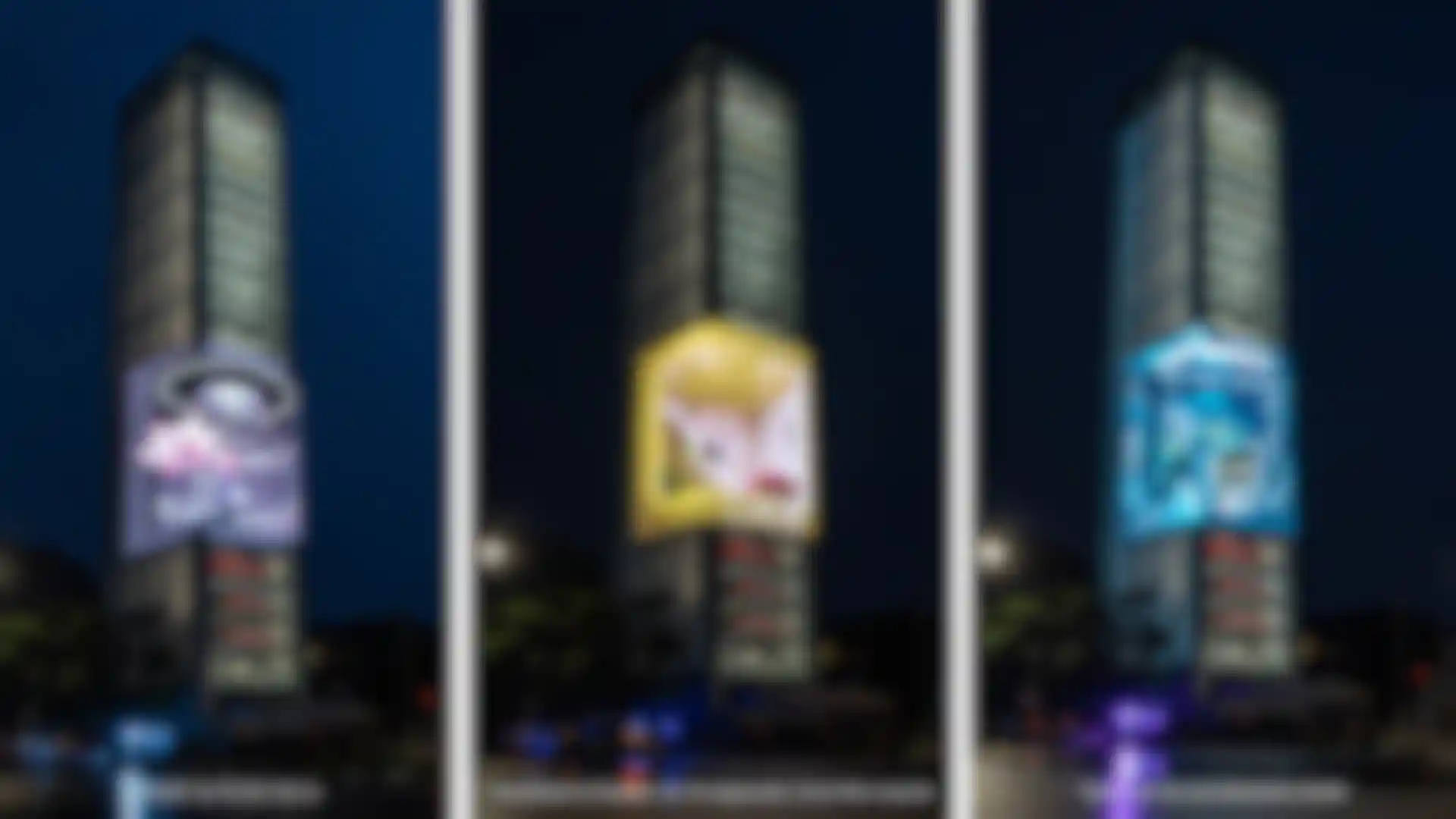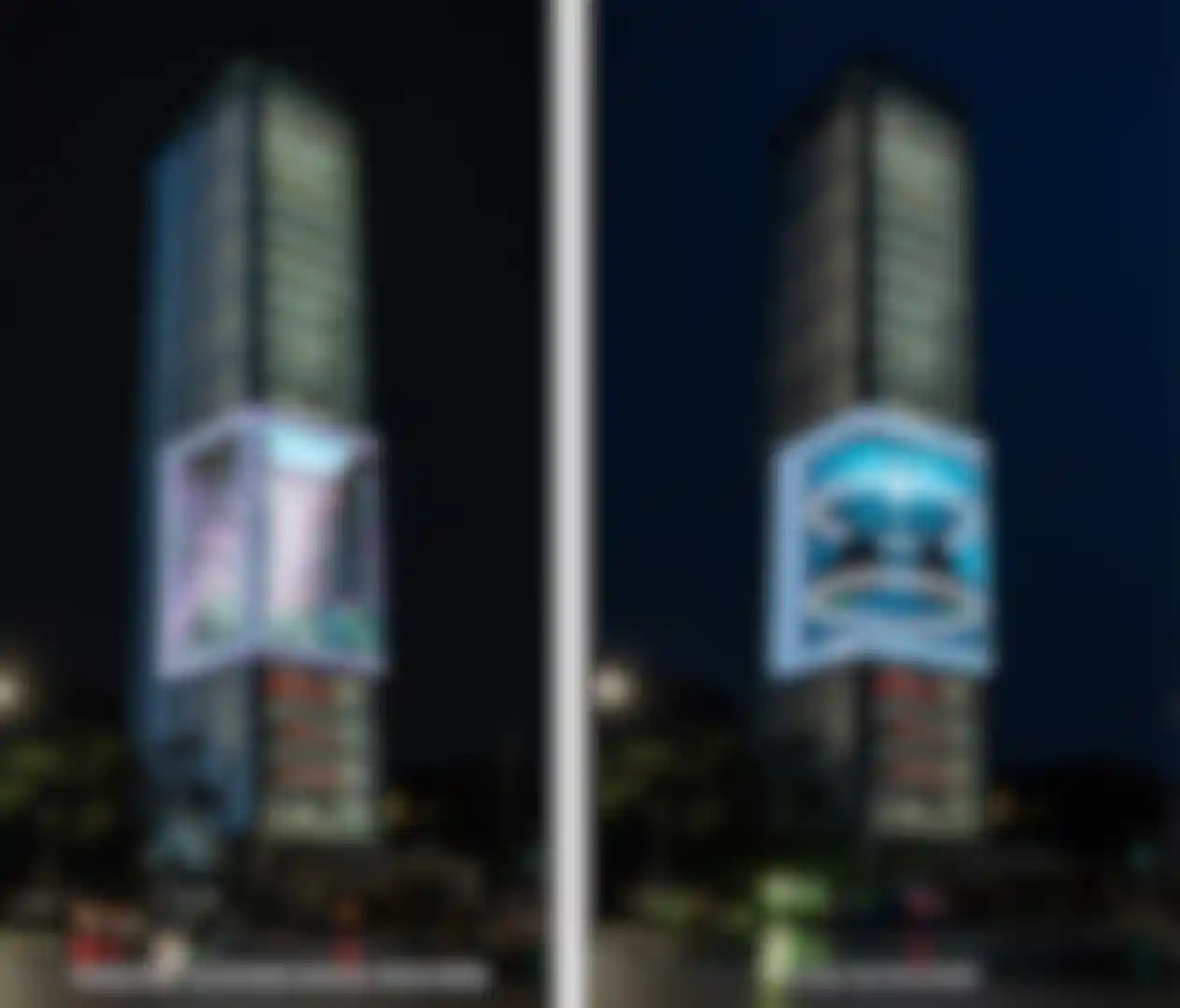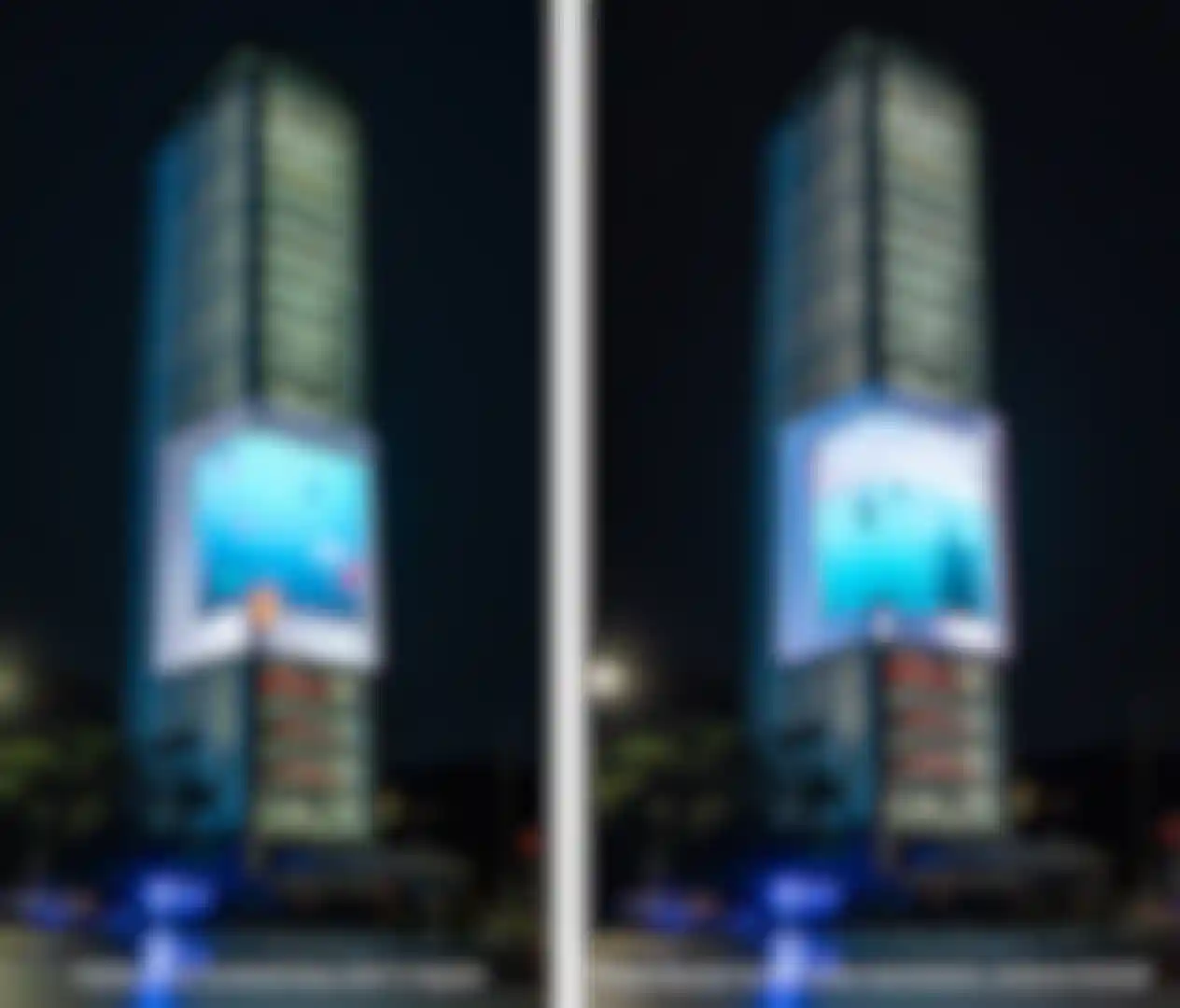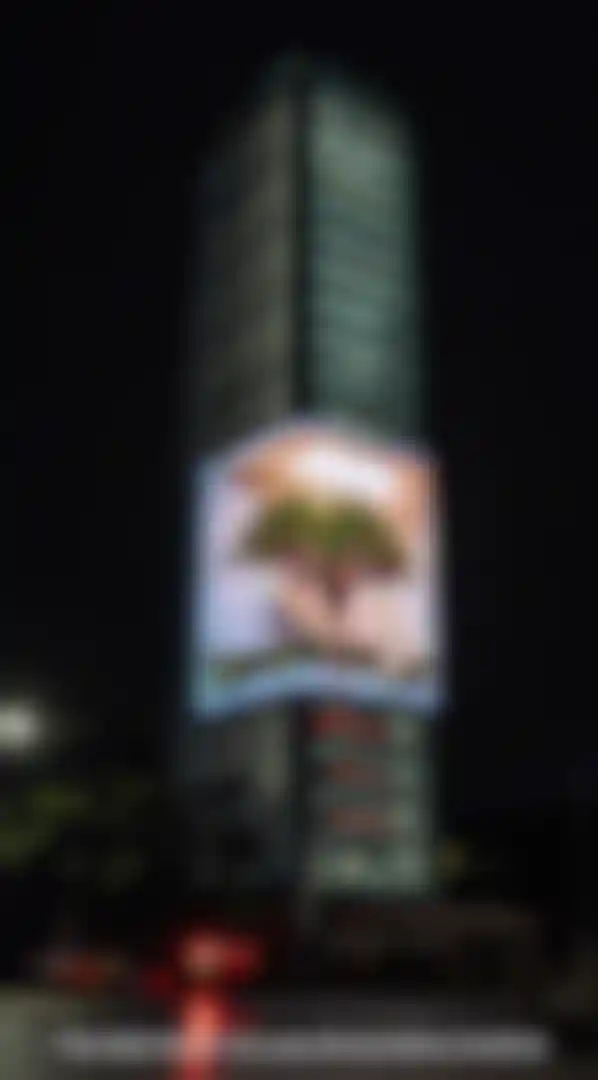
CG Billboards Stop Viewers in Their Tracks How students used Maxon One to create a captivating 3D display in the heart of Singapore.
Asked by their professors to create multimedia artwork for an anamorphic 3D billboard in the heart of Singapore, university students from Germany and Singapore responded with a series of digital animations telling positive stories about climate change and sustainability.
Using a combination of Cinema 4D, Redshift, and Houdini, they experimented with optical illusions and assorted visual effects to create the city’s first three-sided, 3D anamorphic billboard on the façade of the Landmark of Good building, which houses a 15-story car lot and features a solar-powered, LED, wraparound screen.
We talked with Professors Verena Kraemer and Christian Barta, who teach the Visualization and Interaction in Digital Media course at Ansbach University of Applied Sciences in Germany. Here’s what they told us.
Please tell us about this interesting project.
Barta: The “Entangled Futures” project began as a collaboration between me and Verena, who already had a relationship with Professor Ina Conradi, Nanyang Technological University’s School of Art, Design and Media in Singapore.
Kraemer: We also worked with media artist Mark Chavez, with whom I have already realized several site-specific media installations with student groups from Germany and Singapore in recent years. This time, we were invited by Gary Hong, CEO of Project Ten Square, to create works for the Landmark of Good building’s curved LED screen facade.

Say more about the “Entangled Futures” theme.
Kraemer: The overarching theme "Entangled Futures" refers to a book by author Karen O’Brien. Students from both universities were asked to create multimedia artworks depicting a positive outlook of the future for the Earth, climate change, and sustainability. The art was contextualized to their own cultural understandings and aesthetic sensibilities.
And they were also asked to think about architectural dimensions, typology, and the location of the building. The students from Ansbach had the additional task of using the curved shape of the LED to create optical illusions.
What was special about the opportunity offered by this 3D billboard?
Kraemer: The building is located in what is known as Singapore's Times Square, so it was the perfect place to be the stage for this project. It was also our first project for a 3D billboard, and the curved surface presented new opportunities and challenges for us.

Barta: Common in the big metropoles of Asia and the U.S., 3D billboards are an expensive variant of the 2D displays we are used to, and they work best when they curve around corners, covering large areas of a building. With good content you completely forget that there is a display; you think it´s a 3D scene playing inside and outside the building.
Explain a bit about your process and what you found challenging.

Barta: Most students used Cinema 4D to create their scenes and it was also used for animation development with Redshift handling the rendering. Some students used motion capture for character animation, and many of the particle simulations were produced in Cinema 4D, as well as Houdini.
Kraemer: This media installation aimed to add a digital layer as a spatial illusion to the location and to blur the boundaries between technology and reality. To realize the optical illusion, we selected a sweet spot on which to base the perspective. We wanted the viewer to feel like the billboard disappears and the space on the canvas expands to infinity, allowing us to break the fourth wall and interact with the real environment.
Barta: To create that perspective, the students in Germany needed to recreate the exact scene in Singapore in 3D by using various city maps and placing our camera at the exact point where the viewer would stand. We used that camera to review and refine the animations in a virtual 3D version of the actual location.
The hard part was getting the rendered animation into a displayable format, and then distorting it to fit the curved screen. We achieved that by baking the rendered animation onto the 3D modeled curved screen. We had some quality issues, but we got the perfect solution from Jonas Pilz, a former student who is now a training manager at Maxon.
What was the response to the project?
Kraemer: The response was very positive. The students from both universities were thrilled that the optical illusions worked so well, and the audience was very enthusiastic. We are really happy that the collaboration has continued with some of our students working with the same LED screen again. It helps to always stay creative. That’s the key to outstanding work.
Credits:
Christian Barta
Vice Dean of the Faculty of Media, Head of the Visualization and Interaction in Digital Media Program, Ansbach University of Applied Sciences
Verena Kraemer
Professor for Motion Design and Media Spaces at the Visualization and Interaction in Digital Media Program, Ansbach University of Applied Sciences
Ina Conradi
Associate Professor, School of Art, Design and Media; content curator for public art project Media Art Nexus (MAN) at Nanyang Technological University Singapore
Helena Swahn is a writer in London, UK.